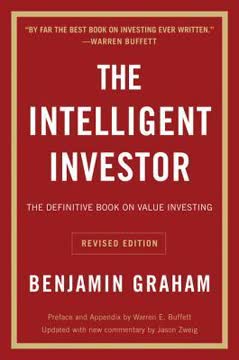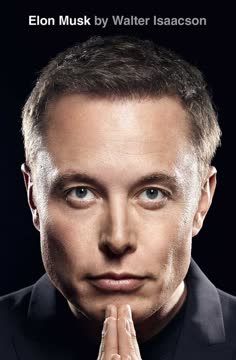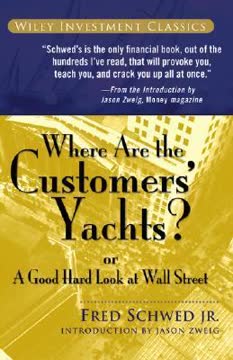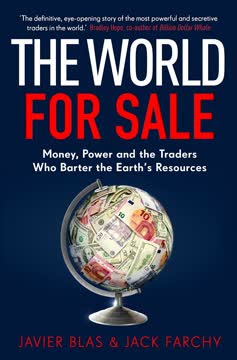Key Takeaways
1. Humble Origins & Early Ambition: From Commercial Paper to Investment Banking.
Over a century and a half of persistent entrepreneurship, his tiny proprietorship would evolve and grow into the world’s leading securities organization.
A simple start. Marcus Goldman, a German immigrant, began in 1869 as a solitary commercial paper dealer in New York, buying merchant promissory notes at a discount. His diligence built a small, accurate business.
- Started with no staff, almost no capital.
- Focused on mercantile paper for small merchants.
- Operated from his high silk hat band.
Family partnership. In 1882, Goldman took his son-in-law, Samuel Sachs, as a junior partner, forming M. Goldman and Sachs, later Goldman, Sachs & Co. The firm grew, becoming the largest commercial paper dealer by the 1890s.
- Early partners were all family members.
- Expanded geographically beyond NYC.
- Joined the New York Stock Exchange in 1896.
Venturing into banking. Led by Henry Goldman, the firm sought to expand into investment banking, initially facing resistance from established railroad bond underwriters. They pivoted to financing "industrial" companies, pioneering the concept of valuing earning power over hard assets.
- Blocked from railroad bond underwriting by an oligopoly.
- Financed early industrial companies like United Cigar and Sears Roebuck.
- Partnered with Lehman Brothers for capital and deal flow.
2. The Shadow of Disaster: Trading Corp Failure & Sidney Weinberg's Rescue.
While all the investment trusts suffered, Goldman Sachs Trading—because it was so large and so highly leveraged and because Catchings had optimistically made overly concentrated investments—became one of the largest, swiftest, and most complete investment disasters of the twentieth century.
Post-WWI leadership. After Henry Goldman's departure due to pro-German views, Waddill Catchings was brought in to lead investment banking. Charming and optimistic, he believed the business cycle was dead.
- Catchings was a Harvard Law graduate with industrial experience.
- Authored optimistic books like "The Road to Plenty."
- Became the largest partner by 1929.
The Investment Trust disaster. Catchings championed creating a highly leveraged investment trust, Goldman Sachs Trading Corporation, which grew rapidly through acquisitions. Launched just before the 1929 crash, it collapsed spectacularly.
- Started as a $100 million idea, quickly grew to control $1.5 billion in assets.
- Highly leveraged with preferred stock and debt.
- Stock price plummeted from $326 to $1.75.
Weinberg's crucial role. Sidney Weinberg, who had risen from janitor, understood the trust's investments and led the painful liquidation. The disaster severely damaged the firm's capital and reputation.
- Weinberg was assistant treasurer of the Trading Corp.
- Led the winding down of the failed trust.
- Firm lost over $12 million, wiping out decades of profit.
3. Integrity, Relationships, and Drive: Weinberg's Enduring Influence.
“The real culture of Goldman Sachs traces back to Sidney Weinberg,” says Al Feld, who worked at the firm for more than fifty years. “Tough as nails, he held the firm on the straight and narrow path of very high ethics—and true fellowship throughout."
Saving the firm. Sidney Weinberg led Goldman Sachs through the Depression and WWII, rebuilding its capital and reputation after the Trading Corp failure. He was tough, tenacious, and focused on integrity.
- Firm was profitable in only half the years from 1929-1945.
- Weinberg became the dominant leader, despite not being from the founding families.
- Acquired rivals to expand the commercial paper business.
Government service & connections. Weinberg's work during WWII, recruiting executives for the War Production Board, built an unparalleled network of relationships with future corporate leaders.
- Known as "the body snatcher" by FDR.
- Recruited top talent for the war effort.
- Became the go-to man between corporate America and the government.
Corporate director & rainmaker. Weinberg leveraged his network and reputation for integrity to become a director of numerous major corporations, bringing significant investment banking business to Goldman Sachs.
- Served on over 40 corporate boards.
- Known as "Mr. Wall Street."
- Used directorships to secure underwriting mandates.
4. Trading Takes Center Stage: Gus Levy's Intensity & Block Trading Dominance.
“Gus was very smart, and an innovator,” said his contemporary, Al Feld. “He built a good business because he recognized the opportunity in all the when-issued paper that came out of the big railroad and public utility financings of the 1940s. And he built a reputation for making good markets—in size. And if he had to take a loss, he took it.”
Arbitrage origins. Gus Levy built his early career in arbitrage, trading complex securities from utility and railroad reorganizations, developing skills in market making and risk-taking.
- Joined Goldman Sachs in 1933.
- Specialized in "when-issued" securities.
- Developed a reputation for making markets "in size."
Pivoting to block trading. As institutional investors grew, Levy recognized the opportunity in block trading, committing firm capital to buy and sell large blocks of stock, transforming it into a relationship business.
- Institutional trading volume increased dramatically in the 1960s.
- Most firms avoided the risk of positioning large blocks.
- Goldman Sachs became a leader by combining capital commitment with service.
Intensity and drive. Levy's relentless focus on "More!" and his demanding style drove the trading division to become the firm's profit engine, accounting for half of earnings by the late 1960s.
- Known for his constant pressure and high expectations.
- Demanded speed and decisiveness.
- Used a string of worry beads.
5. Tested by Crisis: Penn Central & the Cost of Trust.
Clients who had bought Penn Central commercial paper through Goldman Sachs could be expected to sue. Eventually over forty investors did sue, seeking recovery: Their claims totaled over eighty-seven million dollars.
The largest bankruptcy. In 1970, Penn Central, a major commercial paper issuer for Goldman Sachs, declared bankruptcy, causing large losses for clients who held its paper.
- Penn Central was the 8th largest US corporation.
- Goldman Sachs was its commercial paper dealer.
- $87 million in outstanding paper defaulted.
Failure of due diligence. Investigations revealed Penn Central's CFO had lied about the company's financial health. Goldman Sachs was criticized for not adequately investigating or disclosing the risks.
- SEC staff report criticized Goldman Sachs's actions.
- Firm had received warnings about Penn Central's problems.
- Goldman Sachs had taken self-protective actions (e.g., converting to tap issue) without disclosure.
Legal and reputational damage. Lawsuits followed, threatening the firm's capital. While settlements limited financial losses, the Penn Central affair severely damaged Goldman Sachs's reputation for integrity.
- Over 40 lawsuits filed seeking $87 million.
- Firm's capital was only $53 million.
- SEC censured the firm for violating securities laws.
6. The Partnership Evolves: The Two Johns & Strategic Reinvention.
In fact, the first thread leading to this unique proposition was in Gus Levy’s will. Levy had identified the Two Johns as coexecutors of his estate.
Succession challenge. Gus Levy's sudden death in 1976 left a void at the top, with two strong contenders: John L. Weinberg and John C. Whitehead.
- Weinberg was Sidney Weinberg's son, popular, and client-focused.
- Whitehead was older, strategic, and focused on internal operations.
- A contested choice could have divided the firm.
Co-leadership solution. The Two Johns agreed to lead the firm together as co-senior partners, a highly unusual arrangement on Wall Street, based on mutual respect and complementary strengths.
- Weinberg focused on clients and external relationships.
- Whitehead focused on strategy, planning, and internal management.
- They coordinated closely and avoided direct competition.
Driving change. The Two Johns accelerated the firm's pace, expanded investment banking, built capital, and instilled a culture of teamwork, discipline, and continuous improvement, transforming Goldman Sachs into a top-tier firm.
- Increased profitability tenfold during their tenure.
- Expanded internationally and filled out product lines.
- Emphasized teamwork and accountability over individual stardom.
7. Building the Client Machine: The Power of Investment Banking Services.
By making relationship management conceptually equal in stature to executing transactions, Whitehead was able to recruit skillful people into an organization that became notoriously effective at finding business and distributing new product ideas.
Strategic innovation. John Whitehead proposed separating the functions of soliciting business (sales/relationships) and executing transactions (product specialists) within investment banking.
- Challenged the traditional "one banker does it all" model.
- Met initial resistance, including from Sidney Weinberg.
- Started quietly with commercial paper salesmen.
The IBS organization. The new Investment Banking Services (IBS) unit focused solely on building client relationships, initially targeting smaller and midsize companies overlooked by larger firms.
- Expanded coverage from hundreds to thousands of companies.
- Recruited talented MBAs and experienced bankers.
- Developed a reputation for diligence and effectiveness.
Competitive advantage. The IBS "phalanx" system, combining relationship managers and product specialists, gave Goldman Sachs a decisive edge, enabling it to win business and rapidly adopt new products.
- Outflanked traditional firms with entrenched relationships.
- Became known as "the machine" by competitors.
- Enabled a "fast follower" strategy on new products.
8. Mastering Risk & Quants: Arbitrage, Derivatives, and Proprietary Trading.
Arbitrageurs increase market efficiency and—indirectly and unintentionally, as Adam Smith famously explained in The Wealth of Nations— they increase the consistency and fairness of markets and therefore the confidence investors have in markets; that helps improve overall economic performance.
The nature of arbitrage. Risk arbitrageurs profit from price differences in related securities, particularly in merger situations, by making rational judgments under uncertainty.
- Requires unemotional rationality and superior information.
- Deals with uncertainty, not actuarial risk.
- Profits from market inefficiencies.
Rubin's impact. Bob Rubin brought disciplined probabilistic thinking and later quantitative analysis to arbitrage, transforming it into a highly profitable proprietary business for Goldman Sachs.
- Excelled under pressure, maintaining calm and rationality.
- Developed risk arbitrage into a core business unit.
- Recruited brilliant "quants" like Fischer Black.
Quants and derivatives. The integration of academic quantitative models and trading expertise, particularly in derivatives, revolutionized the bond business and trading across the firm.
- Fischer Black (Black-Scholes model co-inventor) joined the firm.
- Quants developed models to identify anomalies and manage risk.
- Enabled profitable proprietary trading on a global scale.
9. Going Global: Ambitious Expansion Across Continents.
"Goldman Sachs was not Goldman Sachs in London," recalls Gene Fife, who was going to London from San Francisco in 1985, only a few months after triple bypass surgery and in the first year of a second happy marriage.
Early, slow steps. Goldman Sachs was late to international expansion compared to rivals, initially having small, unprofitable overseas offices focused on selling U.S. securities.
- Closed international offices during Depression/WWII.
- Initial post-war efforts were "feeble."
- London office was a cost center with low morale.
Strategic commitment. In the mid-1980s, the firm made a major commitment to build, not buy, in Europe, sending top talent to establish a strong presence in London and across the Continent.
- Sent a "pride of ten young lions" to London.
- Focused on building indigenous teams country by country.
- Aimed to replicate the Goldman Sachs culture abroad.
Breaking into local markets. The firm used innovative strategies, like commercial paper and tender defense expertise, and recruited influential local advisors to penetrate established national markets and win mandates from major corporations.
- Used commercial paper as a "wedge" product.
- Leveraged tender defense expertise in the UK.
- Recruited "international advisers" in key countries.
10. Navigating Scandals: Freeman, Maxwell, and Reputational Tests.
Immediately after Freeman’s high-profile arrest, Goldman Sachs retained outside lawyers to conduct an internal investigation. All trading records were examined, and Freeman was interviewed for eight weeks about every aspect of his trading to reconstruct the past two years—all with particular attention to trades and calls to or from Martin Siegel of Kidder Peabody, his accuser.
The Freeman case. Head of arbitrage Bob Freeman was arrested in 1987 on insider trading charges stemming from information allegedly received from Marty Siegel. The case, driven by an ambitious prosecutor, tested the firm's integrity and defense strategy.
- Arrested in a highly publicized manner.
- Accused of trading on information about the Beatrice LBO.
- Firm defended Freeman and conducted an internal investigation.
The Maxwell disaster. Goldman Sachs became entangled with Robert Maxwell, a client with a history of financial misconduct, leading to significant financial settlements and reputational damage for the firm.
- Maxwell was a bizarre British publisher with complex, secretive finances.
- Used Goldman Sachs for large, unusual transactions.
- Firm paid $254 million settlement after Maxwell's death and the unraveling of his empire.
Lessons learned. These scandals, particularly Maxwell, highlighted the risks of lax supervision and the importance of rigorous risk controls and adherence to ethical standards, even with profitable clients.
- Maxwell affair cost the firm over $500 million total.
- Led to much stronger, centralized risk controls.
- Reinforced the importance of integrity and avoiding clients with questionable practices.
11. The Path to Permanent Capital: IPO Ambition & Leadership Struggles.
While a partnership is a legal structure, the effectiveness of any partnership depends on informal bonds between partners. As partnerships get larger and larger, the person-to-person connectedness declines and the dynamic of the group changes.
The need for capital. As Goldman Sachs grew and its business became more capital-intensive (proprietary trading, principal investing), the need for permanent equity capital increased, challenging the traditional partnership structure.
- Partnership capital was insufficient for global ambitions.
- Competitors (Morgan Stanley, Salomon Brothers) went public.
- Risk of partners withdrawing capital during downturns.
IPO attempts and delays. Jon Corzine championed taking the firm public to secure permanent capital, but faced internal resistance, particularly from partners who valued the partnership culture and feared losing control.
- First IPO attempt in 1986 failed due to partner opposition.
- Sumitomo Bank's investment provided a temporary capital infusion.
- LTCM crisis and trading losses forced IPO postponement in 1998.
Erosion of partnership. As the firm grew, personal bonds weakened, and the financial incentives of a potential IPO fueled internal politics and tensions, changing the firm's culture.
- Partnership size increased significantly.
- Focus shifted from firm-building to personal wealth accumulation.
- Increased partner defections during difficult times.
12. Discipline, Capital, and Global Power: Paulson's Era and the Modern Firm.
"The ultimate test of a CEO," Paulson says, "is that he worries about being sure no bad things happen, that he leaves the outfit in better shape and with a smooth leadership succession. I believe I left Goldman Sachs in materially better shape than it was in when I became CEO, both internally and externally."
The coup and new leadership. Jon Corzine was forced out by the executive committee, leading to Hank Paulson's leadership. Paulson, a disciplined and pragmatic leader, focused on strengthening the firm's core operations and capital base.
- Corzine's unpredictable style and strategic decisions led to his ousting.
- Paulson, Thain, Thornton, and Hurst formed the core leadership.
- Paulson emphasized discipline, risk management, and execution.
Achieving the IPO. Paulson successfully navigated the firm to its long-sought initial public offering in 1999, securing permanent capital and positioning Goldman Sachs as a public company leader.
- IPO raised $3.6 billion.
- Majority ownership remained with partners and employees initially.
- Positioned the firm as a "solutions provider."
**Strategic direction
[ERROR: Incomplete response]
Last updated:
Review Summary
The Partnership receives mixed reviews, with an average rating of 3.83/5. Readers praise its comprehensive history of Goldman Sachs, detailing the firm's growth, key leaders, and business strategies. Some appreciate the insights into finance and investment banking. However, critics argue the book is overly positive towards Goldman Sachs, lacks critical analysis of ethical issues, and can be dry or difficult to follow. Many note its length and detail, which some find informative while others find excessive.
Similar Books










Download PDF
Download EPUB
.epub digital book format is ideal for reading ebooks on phones, tablets, and e-readers.






